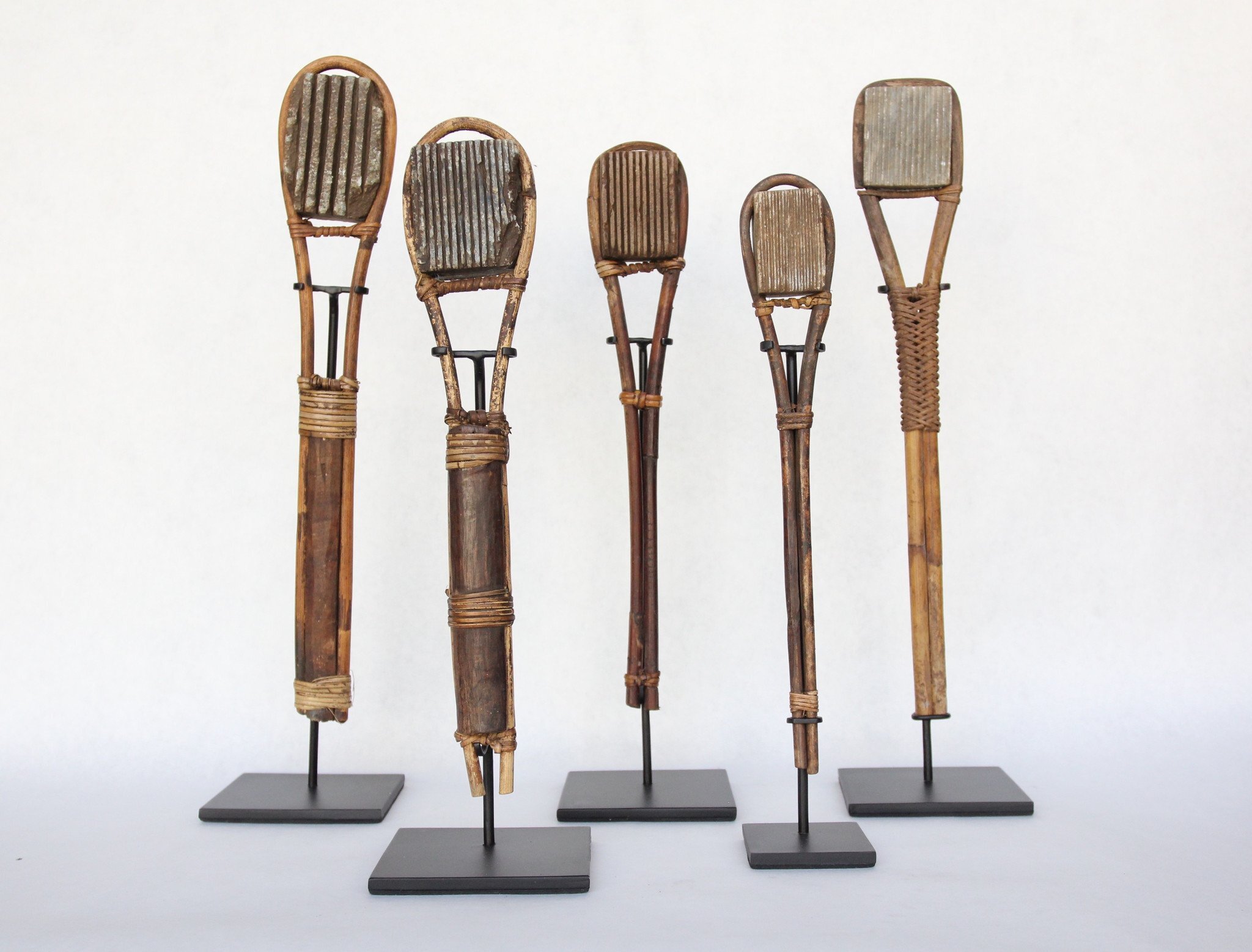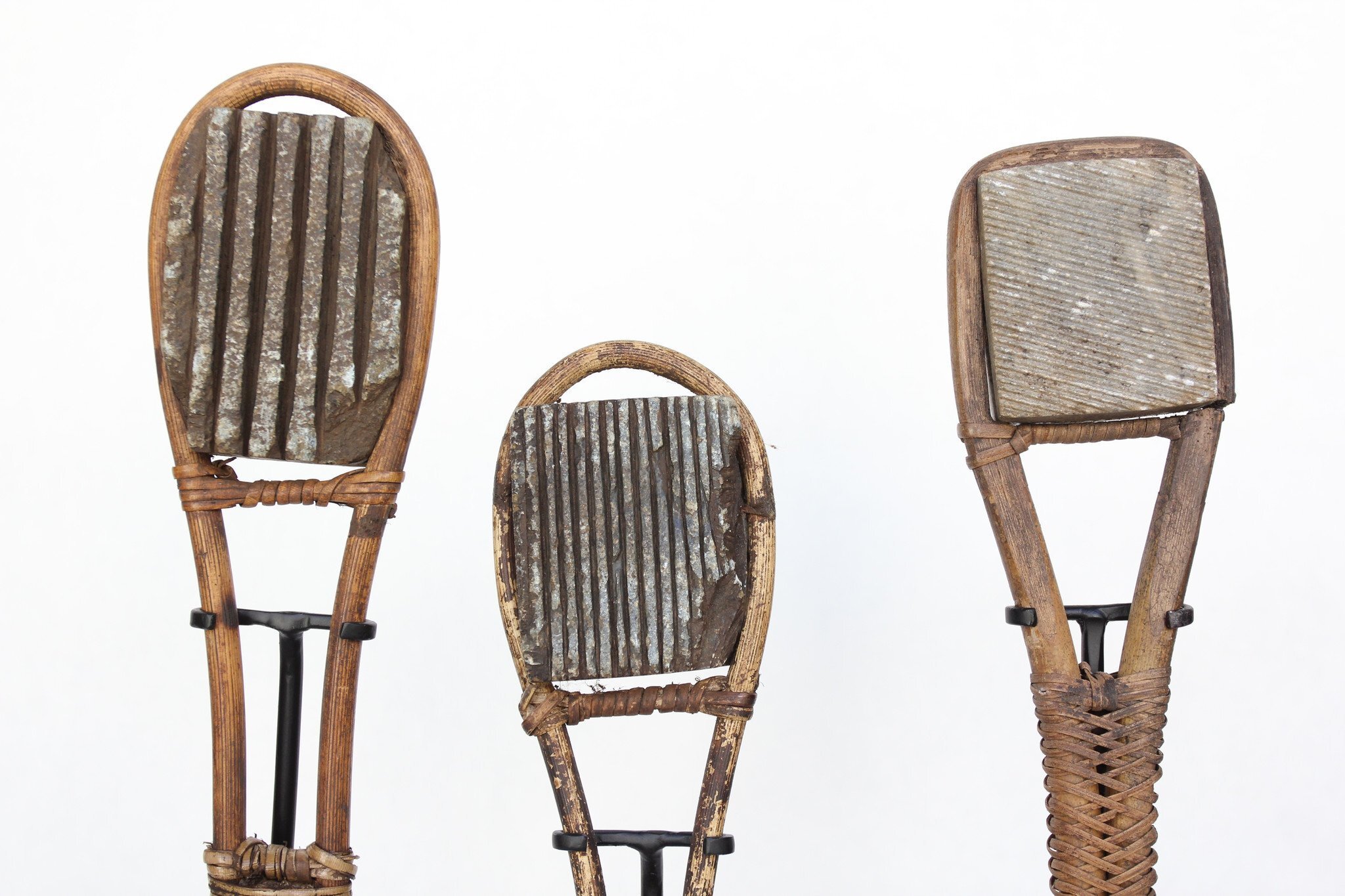 Image 1 of 7
Image 1 of 7

 Image 2 of 7
Image 2 of 7

 Image 3 of 7
Image 3 of 7

 Image 4 of 7
Image 4 of 7

 Image 5 of 7
Image 5 of 7

 Image 6 of 7
Image 6 of 7

 Image 7 of 7
Image 7 of 7








Five Sulawesi Island Tapa Beaters
"In 1905 two scholarly Dutch missionaries who had spent almost a decade studying local cultures and languages in Indonesia concluded that barkcloth was undoubtedly the original clothing material of the entire Indonesian archipelago (Adriani and Kruyt 1905). Moreover, of all the regions where barkcloth was known to be produced and used for either clothing or paper, the interior of Central Sulawesi was described as the source of the most elaborate creations of this unusual fabric technology (Adriani and Kruyt 1905; Raven 1932; Kooijman 1963). Nineteenth century Central Sulawesi barkcloth was exported to other islands for use as clothing material and paper (Adriani and Kruyt 1905), and Covarrubias even describes its use as an imported “canvas for traditional Balinese painting (1986:192)... By the 20th century most tapa production had become extinct in favor of ikat and other weavings." (Lorraine V. Aragon, Penn Museum)
A set of five tapa beaters from Central Sulawesi Island, Indonesia. Rattan handles, and grooved stone heads. All on custom museum stands. Late 19th/early 20th century.
$1,000
"In 1905 two scholarly Dutch missionaries who had spent almost a decade studying local cultures and languages in Indonesia concluded that barkcloth was undoubtedly the original clothing material of the entire Indonesian archipelago (Adriani and Kruyt 1905). Moreover, of all the regions where barkcloth was known to be produced and used for either clothing or paper, the interior of Central Sulawesi was described as the source of the most elaborate creations of this unusual fabric technology (Adriani and Kruyt 1905; Raven 1932; Kooijman 1963). Nineteenth century Central Sulawesi barkcloth was exported to other islands for use as clothing material and paper (Adriani and Kruyt 1905), and Covarrubias even describes its use as an imported “canvas for traditional Balinese painting (1986:192)... By the 20th century most tapa production had become extinct in favor of ikat and other weavings." (Lorraine V. Aragon, Penn Museum)
A set of five tapa beaters from Central Sulawesi Island, Indonesia. Rattan handles, and grooved stone heads. All on custom museum stands. Late 19th/early 20th century.
$1,000

